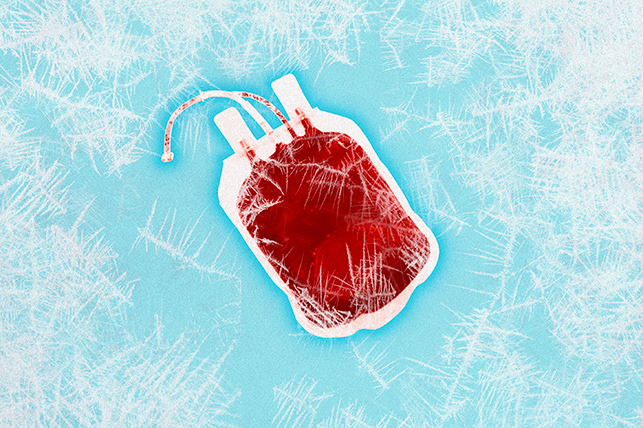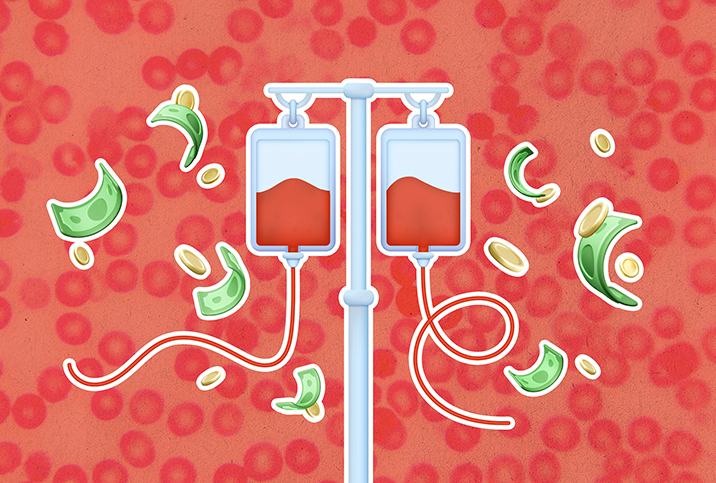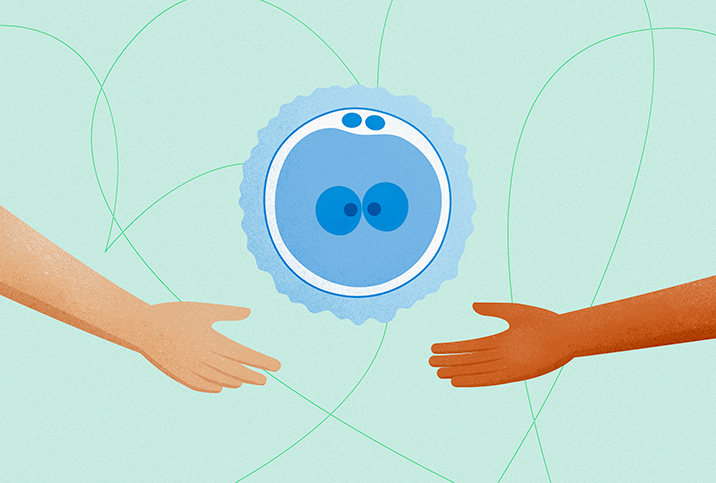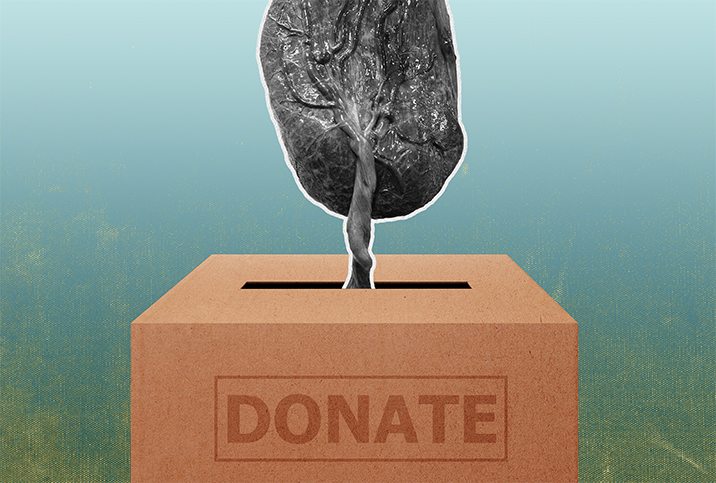There Are Never Enough Blood Donors in the Winter

The season of coughs, sneezes and sniffles is here. The news is full of articles about widespread influenza, predictions for new strains of COVID-19, and hospitalizations from cases of respiratory syncytial virus (RSV).
These infections join with the usual colds and allergies of the season to keep us sniffing. And sniffles have a direct effect on blood donations.
Why are there fewer blood donations?
There are two main reasons blood donations decrease in the colder months.
The first is winter weather. When snow, ice or blustery winds are in the forecast, blood drives may be forced to close early or people may be unable or unwilling to travel to their appointments. When extreme weather such as blizzards, ice storms or excessive snow hits, the ability to collect blood in those regions may be impacted for weeks.
The other culprit is viruses. Respiratory infections increase in the colder months. When people call in sick to work, they must also postpone their blood donation appointments because you can only donate blood if you're healthy on the day of your donation.
However, if you previously received flu and COVID vaccinations and boosters, your eligibility to donate is not affected.
"There's no waiting period after either the COVID or the flu vaccines," said Baia Lasky, M.D., an American Red Cross medical director and certified physician in blood banking and transfusion medicine. "We just ask that individuals be healthy and well the day they come to donate. If you're having any symptoms, even if you think it's only a vaccine reaction, stay home until you've fully recovered."
But these are strictly day-to-day issues, whereas there are more long-term signs that donations are down year to year.
"We are seeing fewer individuals giving blood regularly," said Jessica Merrill, director of biomedical communications at the American Red Cross in Washington, D.C. "The nation's reliance on a smaller donor base makes the blood supply vulnerable to periodic shortages, especially for key blood types like type O."
Type O-positive blood is the most transfused blood type because it can be given to any Rh-positive patient, which accounts for about 85 percent of the population. Rh factor is an inherited protein found on the surface of red blood cells, according to Mayo Clinic. Rh positive means the protein is in your blood.
On the other hand, type O-negative blood is the most coveted but is present in only 7 percent of the population.
"Type O-negative is the universal blood type and that's what emergency room personnel reach for when there is no time to determine the blood type of patients in the most serious situations," Merrill explained. "We have fewer active type O-negative donors now than we've had in decades."
The need for donations is the same throughout the year
It's a documented fact that 1 in 7 patients entering a hospital need a blood transfusion. According to Lasky, the ongoing need for blood products—whole blood, red cells, platelets and plasma—remains consistent throughout the year.
"It's going to patients who have experienced trauma, who require a lot of blood products just to survive," she explained. "It also goes to cancer patients, premature babies [and] individuals with blood disorders such as sickle cell disease. It saves lives across the spectrum of specialties, including labor and delivery. A lot of people don't understand the importance of blood until they've experienced the need themselves."
Lasky noted that the demand for blood donors is constant.
"It's our ability to collect that can be quite variable," she added.
How long does a blood donation remain viable?
Blood is a living product that begins to degrade once it's outside the body. Donations are processed and stored in ways to maximize the length of time they're usable.
A whole-blood donation is usually processed into its components: plasma, platelets and red cells. Each component is packaged and ready for transfusion:
- Plasma is frozen for up to one year.
- Platelets are stored at room temperature for up to five days.
- Red cells are kept cool in a refrigerator for up to 42 days.
- Rh-negative red blood cells—because they're rare and so vital—are cryopreserved, so they can be stored for up to 10 years.
Hospitals try to keep a propitious supply of blood products on hand so they're ready when the need arises.
"It's the blood on the shelves today that's going to save the life today," Lasky said. "There's always a concern that patients will have to go without, especially as we go into the cold and flu season."
"The Red Cross has a unique responsibility to meet the demand for blood and help ensure it is available for patients whenever and wherever it is needed," Merrill said.
The American Red Cross usually uses ground transportation with a Red Cross driver or courier. It also uses next-day or next-flight-out air transportation, depending on how much time is available to supply the demand, she added.
How to make your own donation
The colder months are traditionally a hard time for the nation's blood supply. Donors, especially those with type O blood, are needed throughout winter, but today is always a good day to donate.
If you have never donated or it has been a long time, visit the Red Cross website or download the donor app (text BLOODAPP to 90999) to find out how to schedule an appointment. Block off an hour in your calendar, but the donation itself takes only about 10 minutes.
If you have recently donated, check to see when you are eligible again. (The app will tell you.) You are able to donate every 56 days. Make an appointment to return as soon as you are able, so an illness, a vaccine reaction or a winter storm doesn't keep you away longer than necessary.
Every pint of blood is vital. In a positive move for supplies, the Food and Drug Administration (FDA) recently announced a proposal to lift the decades-long ban on blood donations from men who have sex with men.
Under the existing rules, most sexually active gay and bisexual men are excluded from blood donation. This long-standing policy was established during the 1980s at the start of the AIDS epidemic.
In 2015, the FDA eased restrictions to allow gay and bisexual men to donate if they had not had sexual contact with other men for a year, and further reduced the window to three months due to blood shortages during the COVID-19 pandemic.
Under the new proposed policy, potential donors would no longer face screenings based on gender or sexual orientation. Instead, people seeking to donate blood would be assessed for HIV risk based on recent sexual activity and partners, as well as injectable drug use.
People who had anal sex within the previous three months with a new sexual partner or more than one sexual partner would be excluded from donating. Prospective donors taking medications to treat or prevent HIV, including PrEP, would also be excluded. All donated blood will continue to be tested for HIV.
"We are moving now to an inclusive policy for blood donation," said Peter Marks, M.D., Ph.D., director of the Center for Biologics Evaluation and Research for the FDA, during a Jan. 27 press conference. "We will continue to work to make sure that we have policies that allow everyone who wants to donate blood to be able to donate blood within what the science allows to make sure that the blood supply remains safe."
The FDA will accept public comments for 60 days before making a final decision. If the changes are passed, gay and bisexual men who are in monogamous relationships may be eligible to donate by the end of 2023.
There is no substitute for the lifesaving ability of blood in our healthcare system. It can only come from volunteer donors rolling up their sleeves to help others.
María Cristina Lalonde contributed to this report.


















